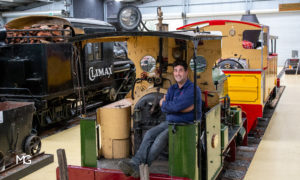Puffing Billy Railway will bring even more rail history to life with the doors to its highly anticipated Menzies Creek Museum now open.
The new historic Museum covers a space of 1160 square metres and houses over 80 exhibits, including rare operational steam and diesel locomotives, carriages and a rail tractor. Adding to the atmosphere, the Museum also features an operational boiler house that services steam engines, fluid pumps and 500 brake horsepower generators.
A themed children’s play area and the Little Toot Café provide space to sit down, relax and await the 30-minute train journey back to Belgrave.
Museum Manager, David Baker, who started at the Railway as a volunteer in 1993, said the Museum project has been a huge undertaking over a 10-year period.
“The Menzies Creek Museum was originally established in the 1960s and was opened to the public in the early 1970s, as a partially sheltered, outdoor museum,” David said.
“The original museum displayed many of the same exhibits we have in the Museum today, however not a lot was known about their background and there was very little interpretation.”
“The museum closed in 2003 as the structure was in need of update and repair. It sat idle for a number of years while we worked out the best way to proceed, and in 2010, the first sod was turned to create the new Museum which stands today,” he said.
David said it has been a long process to get the doors opened, with thousands of hours from staff and volunteers going into researching each item to discover their stories.
“Most of the items on display were acquired in the 1970s and 1980s and predominantly tell the story of industrial Melbourne from the 1800s up to the modern day,” David said.
“As we researched each item, we came across some great stories about where they came from and what they were used for. It was a fascinating process and a huge step forward in the preservation of this part of rail history. We have now documented all this information and incorporated it into the Museum experience, making it more interesting and educational for visitors.”
“We have a big vision for the museum and will be adding more audio-visual and interactive experiences over time. We are also working on a road/farm steam area to highlight what life was like alongside the narrow gauge. We have a steam tram and steamroller that we are working to get on display and are always looking out for items of significance to expand our collection,” he said.
So the burning question on everyone’s lips – what is David’s favourite item in the Museum?
“My favourite item has to be the Climax loco,” David said.
“It is a unique locomotive as it was built to run on undulating, imperfect track at low speed with lots of power. It is also the only intact Climax out of 50 known locomotives to have worked on the Victorian timber tramways, and the only one built to operate in Victoria, so it is pretty special,” he said.
A train service to Menzies Creek will cater for visitors wishing to experience this station stop and take in the new Museum.
Passengers can enjoy a 30-minute journey from Belgrave, passing over the historic Monbulk Creek trestle bridge and through the forests of the Dandenong Ranges, before arriving at Menzies Creek to visit the Museum. The return train ride departs 45 minutes later with Museum entry included in the fare.
Passengers taking the longer ride from Belgrave to Lakeside can enjoy the Museum by car, as part of their fare, following their steam train adventure.
Those wishing to visit the museum only can drive to Menzies Creek Station and purchase Museum entry upon arrival. As an opening special, entry to the museum is free of charge until July 31, 2020. After this date, entry will be free with a train ticket for the same day, or $10 per adult, $8 concession, $7 children and $30 for families (2 adults and 4 children) for those not travelling on a train.
MUSEUM HIGHLIGHTS
- Climax locomotive No.1694
A miraculous survivor of a rare breed of steam locomotives. This was the first piece to land at the Museum and was another factor in the build of this site, which was originally built to house the Climax. For 100 years from the mid-1850s, sawn timber was carted from Victorian sawmills to the nearest railway station by timber tramway. These tramways were generally very rough, steeply graded, sharply curved, and mostly of narrow gauge. Many had wooden rails and horses provided haulage. The better ones used steam locomotives. About 50 steam locomotives are known to have worked on Victorian timber tramways, and the Climax 1694 is the only one still intact. It was built in 1928 by the Climax Manufacturing Company, Corry, Pennsylvania, USA, for the Forests Commission of Victoria Tyers Valley Tramway near Erica. - Tank Locomotive - 0-6-2 T No.1 "Delta"
Another relic of the Museum, weighing 16 tons (16.3 tonnes). It was one of the post-war narrow-gauge steam locomotives, which worked in the cane fields of Queensland until 1978. It is one of few Australian-built locomotives. - Decauville Locomotive Carbon
Officially named ‘Carbon’ and built in 1889 in Belgium, it is the oldest locomotive in the Museum and as far as is known, the only one of its kind still operating in its original condition. - Shay Locomotive Number 14
Considered a premium locomotive, Shay was built in Lima, Ohio, in 1912 and purchased by the Taiwanese Government for the transportation of timber on the Alishan Forest Railway. It was gifted to Puffing Billy in the early 1970s. - LI’L TOOT
Not much is known about Li’l Toot other than the fact he was built in England by a British engineer. He was repainted and looks a lot like Thomas the Tank Engine! He has a brother called ‘Mowbray’ who is an exact replica and lives in Port Douglas. - The Sub Nigel
Built in Germany for the Sub Nigel Gold Mines in South Africa, the highest yielding gold mine in the world. - 3A NA Locomotive
The second NA class locomotive to be built at the Victorian Railways Newport Workshops, incorporating some spare parts supplied from the USA with the original two NA locomotives. 3A commenced running construction trains on the Gembrook line on 23 April 1900. This is the only unrestored locomotive in the Museum, which will move to the Lakeside Visitor Centre in December 2020. - Hudswell Clarke 1863 ‘Coronation’ Built in 1952 by Hudswell Clarke for the Colonial Sugar Refining Co (CSR), the biggest operators of narrow-gauge steam locomotives in the southern hemisphere. It was also the last steam locomotive imported to Australia for use on the Queensland Cane fields and named ‘Coronation’ after arriving in Australia the same day as the Queen’s coronation.
- 1NH Truck (1NPH)
Formerly an explosives van that transported black powder and general goods in Walhalla during the gold mining era. It was a combined explosives and goods van for one year until the Railway Commissioners decided not to convey explosives on the Walhalla line.
View PDF here.

